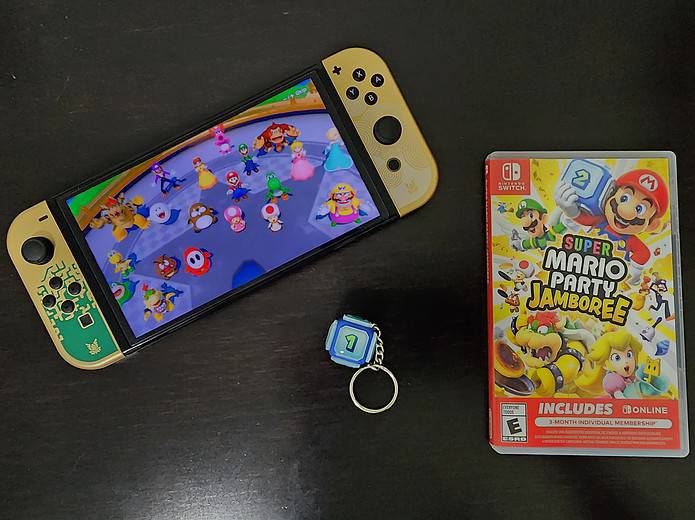On cue with Nintendo’s usual cadence for releasing Mario Party games, the Japanese gaming giant released Super Mario Party Jamboree to thunderous applause. It turns out, the big N’s newest party game is a bop.
Released on October 17, Jamboree outshined the last handful of Mario Parties and delivered the most characters (22), the most minigames (112), and one of the higher board counts (7) in series history.
While Superstars (Jamboree’s predecessor) had finally delivered the size of boards fans had been looking for, albeit remastered from prior iterations, the newest Mario Party is largely comprised of all-new boards this time around.
Five out of the seven boards make their debut with one of the two returning stages being a charming recreation of the fan-favorite, Western Land. The new boards are no slouch either.
Every stage features its own gimmick with cleverly interweaving pathways. Whether it is the rising tide of Goomba Lagoon or the escalators of Rainbow Galleria, the routes players will take across each map will be constantly changing as they attempt to nab the most stars.
That will be happening a lot, too, as this brings us to one of the few questionable decisions made by the developers. While the boards are trickier to traverse, the coin economy in Jamboree is slightly too inflated.
This means that players who are even mildly good at minigames will be flush with cash throughout nearly every match. That is not necessarily a negative on all maps, though.
A stage like the aforementioned Rainbow Galleria, which is packed with a variety of shops to spend your hard-earned coins, appears to emphasize coin abundance from beginning to end. It makes perfect sense for a shopping mall after all.
The second of the two unlockable maps, King Bowser’s Keep finds it own way around the coin issue – it takes everything from the player early and often. With a constantly growing number of bowser spaces, King Koopa’s board feels specifically designed to cut the player down to size at least once every playthrough.
Otherwise, the only other main gripe with the game is with its minigames. While there are more than ever, some are less than perfect, and several others are locked behind side modes.
If someone were to play party mode without motion controls on, little more than half of the minigames are available. Fortunately, turning on motion controls bumps the number to 70-plus, and several of those games are genuinely fun.
Speaking of side modes, there are a trio of standouts. Koopathlon sees 20 players face off against each other as they compete in minigames to be the first to race around a special board a set number of times.
Bowser’s Kaboom Squad pits eight players in a co-op battle against Impostor Bowser and other obstacles on a city-themed map. Bombs, bananas, boost pads, and more can be used to help players defeat Mario’s big bad rival.
The satisfying romp is so enjoyable that Nintendo could probably stand to spin it off into its own $15 to $20 Kirby’s Dream Buffet-sized side game sold on the Switch’s e-shop. In the very least, the company could trim down the number of side modes and focus on just Koopathlon, Kaboom Squad, and Pro Rules in the future.
Less of a side mode and more of an option within Party mode, Pro Rules offers a unique partying experience where the game’s randomness has been reduced significantly. It is 12 turns long, features a finite number of items to purchase, and Bowser spaces always take a star.
Exciting and frustrating in only the way Mario Party can be, Super Mario Party Jamboree may not be game of the year, but it is an exceptionally fun swan song for the Nintendo Switch.

